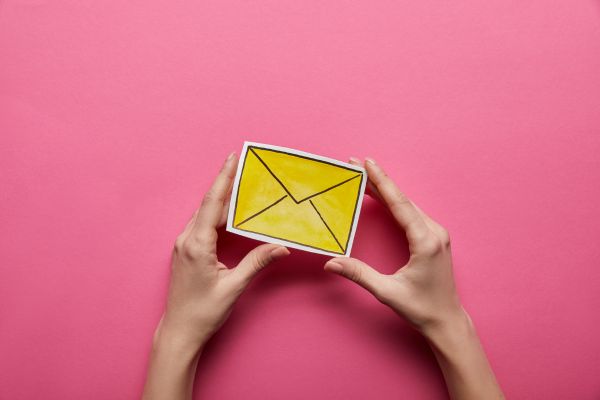
What if you had the power to reach out to each customer individually? What if you could send a targeted email to each customer to complete a sale or pitch a new item? What if you could skyrocket your ROI and complete more sales?
It may seem impossible, but you can do it. It doesn't matter how many email subscribers you have or how large your business is. You can reach every customer individually.
It only takes one strategy: trigger marketing.
To learn more about trigger marketing and how you can use it to improve customer relationships, keep reading. We'll tell you everything you need to know.
What Is Trigger Marketing?
Trigger marketing is the strategy behind marketing automation. Usually, marketers will use marketing automation software to set up triggers. These can be messages, updates, or other actions that happen automatically after the customer completes a trigger.
The event that triggers the email can be one of many things:
- Filling out a form
- Opening an email
- Viewing a page
- Interacting with a chatbox
- Signing up for an event or list
In response to these trigger events, you may set up one of the following actions:
- Send an automatic email
- Update their record
- Add them to a list
- Assign them to an employee
- Send a notification
In sum, trigger marketing involves setting up an automatic system. This automatic system performs an action based on something that a visitor, customer, subscriber, or client does.
You can set up certain events for specific triggers. This can help you customize your customers' experiences and improve your relationships with your customers.

Benefits of Trigger Marketing
As you can tell, trigger marketing is extremely beneficial for businesses that are trying to build relationships with their customers. However, the question remains as to whether or not trigger marketing is beneficial to your customers.
In today's market, every move that your company makes should be based on the wants and needs of your customers. Therefore, you need to make sure that every marketing decision is customer-based.
Luckily, trigger marketing is beneficial for both the business and the consumer. Let's talk about why.
Your Customers Feel Seen
One of the most beneficial parts of trigger marketing for your customers is personalization. By personalizing your communications with your customers, you're showing your customers that you care about their personal experience with your business.
You Get to Nurture Your Leads
By cultivating these relationships with your customers, you're pushing the customer farther along in their journey with your company. This could lead to a sale for you.
If it doesn't immediately lead to a sale, you may encourage the customer to do other things. They could start a free trial or download content.
You'll Increase Customer Retention
You can send automated emails to individuals who have already purchased from your company. You don't only have to send emails to those who haven't made a purchase.
By continuing communication with past customers, you're encouraging repeat purchases while building long-term relationships. This will also increase the likelihood that these customers will tell their friends and family about your business.
You Save Time
Automation saves time. It doesn't matter how big or small your business is. Time is important.
By cutting down on operational tasks, you're setting your business up for future success. Plus, your marketing team doesn't have to worry about annoying, repetitive tasks anymore.
You Build Trust With Your Customers
With consistent email marketing, you can build a relationship based on trust. Your customers will come to know you as an authority in your industry. Thus, they'll be more likely to trust you with information that they want/need.
Plus, they'll be more likely to trust your products.

How to Use Trigger Marketing
Trigger marketing can completely transform your marketing strategy. At the same time, it can increase sales and improve customer relationships.
But, this is only if you know how to use trigger marketing.
Let's talk about how trigger email marketing works and how you can use it to improve your marketing strategy.
1. Know Your Audience
First and foremost, you need to understand who you're targeting. If you don't know your audience, you won't know how to communicate with them.
Once you know what kind of buyers you're talking to, you can think through the lifecycles of those customers. At the same time, you can understand their troubles and motivations.
The more information you can gather about them, the better you can create an effective trigger marketing strategy. The goal here is to guide each customer along their customer journey to a final purchase. After that, you want to encourage repeat purchases.
2. Think About Cause and Effect
Trigger marketing is filled with cause and effect statements. If a customer does something, your automated system will respond by doing something else.
- The cause is the customer's action
- The effect is the system's response
As you're creating triggers for your marketing automation strategy, you need to think in terms of cause and effect. This will help you understand how these actions happen in relation to one another. Plus it will make creating marketing triggers easier.
3. Define Triggering Events
In order to make trigger marketing work, you have to identify the triggers that you're going to automate your systems to respond to. In other words, you need to identify the causes that you want to respond to.
Unfortunately, you are limited in the causes that you can choose. You can't follow each one of your customers around to see every single time they view your Instagram page. But, there are some actions that you can keep track of:
- Page views
- Link clicks
- Personal criteria
- Responses to emails
- Responses to campaigns
- Confirmation events
You have to be able to track the triggers that you're choosing to respond to. This is how you'll be able to respond to each customer individually at the appropriate times.
4. Determine Automated Actions
Now that you've listed the triggers that you want to respond to, you need to figure out what your responses are going to be. Go through the list of triggers that you made and identify what you want to do in response to those actions.
There are a variety of things you could do:
- Send an email
- Update the customer's profile
- Add the customer to a list
- Categorize the customer
Whatever the automated action is, make sure that it matters. There's no point in creating lists or categorizing customers if it isn't going to be advantageous for you in the future.
5. Write Personalized Messages
Personalization is everything. In fact, 90% of leading marketers agree that personalization contributes significantly to business profitability.
Consumers want to feel like you care about them. They want to see that you're making an effort to reach out to them personally. There's no such thing as 'just another customer' anymore.
You have to make the customer feel like they are the most important person to your business. In actuality, you have to recognize that each and every customer contributes to the success of your business.
It is possible to make automated messages personalized. Of course, you can set the beginning of an email to address the customer by name. But, you can also identify where that customer is in their journey and how you can provide value to them at that time.
The end goal here is to move the customer on to the next step.
6. Initiate Marketing Automation
Professionals use marketing automation to reduce the number of repetitive tasks that they have to do on a daily basis. Marketing automation can help your marketing team focus their time on more important tasks.
In order to implement marketing automation, you have to identify these repetitive tasks. This is so that you can remove them from your schedule and give them to the automated system.
For example, let's focus on email marketing. Your marketing team likely Sands hundreds of emails a day to multiple contacts.
Usually, these emails can be repetitive. In fact, your team may copy the text and change the name at the beginning for each recipient.
Email marketing is important to any marketing campaign, but this is a big waste of time. Removing this task from your daily schedule will increase your productivity in other areas. In fact, it will improve your company's performance overall.
So, it's time to get rid of the daily emailing and implement automated email marketing. An automated system can send these emails faster than your marketing team can. The job gets done, and your marketing team doesn't have to worry about doing it.
7. Pay Attention to Customer Relationships
The best way to manage and improve your customer relationships is through make automated messages personalized. Of course, you can set the beginning of an email to address the customer by name. But, you can also identify where that customer is in their journey and how you can provide value to them at that time.
The end goal here is to move the customer on to the next step.
customer relationship management. This kind of software can help you keep track of customer data and improve each relationship effectively.
Without an effective management system, you'll likely have messy data. In turn, you won't be able to take advantage of marketing automation to its fullest. This is because you won't be able to personalize your marketing techniques because you won't know much about the customer.
Luckily, you can use automation to update your customer relationship management records and categorize contacts appropriately. Ultimately, you need to use your automated system to improve the accuracy of your database so that you can market to these customers better.

Examples of Trigger Email Marketing
Triggered emails are some of the most effective ways to reach out to customers. They allow marketers to contact customers when they complete a predetermined trigger.
Email marketing isn't dead. And, with the right strategy, email marketing can be your most successful method of improving customer relationships.
So, let's look at some examples of trigger email marketing that you can apply to your business.
Cause: A Visitor Downloads Free Content
Many companies use free content to draw potential customers in. For example, a company may showcase an e-book or another educational piece of content. Then, that company will send the content to the individual in exchange for their email address.
If an individual downloads content that you're offering, it may be a sign that they're interested in other offers that you have as well. Therefore, you want to reach out to these people and give them a proper call to action.
Effect: Send the Visitor a Call to Action
In this situation, you want to send a transactional email. This kind of email confirms that the individual signed up to receive this free content. This may be a confirmation of the download, registration, or request.
In addition, you'll want to include any important information that the individual needs along with that content.
For example, let's say that the visitor signed up for a webinar. You'll want to send a follow-up email that confirms the date and time of the webinar. You may also want to give this person the link to the webinar ahead of time.
However, this isn't just an informative email. You also want this potential customer to move to the next step in their journey.
Think about the call to action that you want to put at the end of the email. You may want them to look at a product or consider another free educational resource. Maybe you want them to visit your blog or listen to your podcast.
Whatever it is, you should communicate this at the end of the email and give clear directions as to what the person should do. You have their attention. Take advantage of it.
Cause: A Visitor Didn't Complete a Series of Actions
Whenever a visitor doesn't complete a series of actions, you should reach out. They could have visited our website page without clicking on something. They could have signed up for a trial but not started it.
Whatever the series of actions is, you want to encourage the visitor to take the next step.
Effect: Send the Visitor More Details
In order to reach out to these visitors, you need to send them related content to whatever they were viewing. This will encourage them to go back to the webpage they were looking at and complete the series of actions.
For example, let's say that a visitor signed up for a trial but hasn't started it yet. You may want to send them common questions and answers about the trial. Or, you may want to clarify why they should take advantage of the trial.
With this, you want to make your end goal clear. You want to tell the visitor to complete the next step. Therefore, you need to explicitly state what the visitor should do and why they should do it.
Cause: A Visitor Viewed a Specific Webpage
This kind of cause or trigger is most common in e-commerce. You may notice that a potential customer was looking at jeans. Therefore, you want to reach out to this customer if they didn't end up buying any.
For other businesses, this may include a visitor looking at a specific blog article or a product page. These kinds of actions can give you an idea of what the customer is looking for. Therefore, you want to reach out to help them learn more about your company or buy a product.
Effect: Send the Visitor Related Content
If you find that a potential customer is viewing a specific kind of content on your website, you want to reach out to them with more of that content. Obviously, they've shown an interest in the subject. So, you should give them more of what they're looking for.
This also assures that the individual will actually be interested in what you're sending them. They'll be more likely to click on the content that you emailed.
With e-commerce organizations, this may look like a recommendation email. For example, you may send the person who was looking at jeans more options to choose from. Or, you may ask them to explore a new cut or type of jeans that your company just launched.
Cause: A Visitor Is Engaged
This may seem like a weird trigger to point out, but it's important to recognize customers who are spending more and more of their time on your website. By contacting these customers, you're contacting the most likely people to invest in your business.
A highly engaged visitor would be one that has accessed a ton of content in a short span of time. Perhaps, they've downloaded three e-books and viewed eight of your articles.
You want to respond to these kinds of behaviors to take advantage of the passion that these customers are showing.
Effect: Send the Visitor Their Next Step
When you note their engagement, you should send the visitor their next step. This means that you need to create a call to action that you believe the visitor would and should complete. If you can, they should be related to the content that they were viewing on your website.
If you send them unrelated content, they aren't likely to engage with the email.
So, you should make automated emails for different series that exist within your website. You're going to have a different call to action for each series, so it's important to differentiate these automated emails.
Cause: A Visitor Isn't Engaged
On the other hand, you need to make sure that you're contacting unengaged subscribers. If you find that someone isn't interacting with your emails and hasn't visited your website, it's important to reach out to them.
The goal is to bring them back into your loop. But, this isn't always possible.
You should try to reach out via email after a few months of inactivity. You could give them an exclusive offer or introduce a new product they might have missed.
In these emails, you should make it easy for the individuals to unsubscribe. It's better to have them unsubscribe than have them drag down your customer engagement rates.
Cause: A Consumer Interacts With You on Social Media
Social media is a great way to connect with consumers. Even if you have a small business, you can take advantage of social media to promote your business.
If someone interacts with you on social media, you should reach out. You could do this via email or direct message. Either kind of communication will help your company improve its relationship with the individual.
Even if the consumer hasn't purchased from your company before, communication with them can help encourage a purchase.
Effect: Send the Consumer More Information
Whether you decide to contact the consumer via email or via direct message, you should make sure that you are supplying the consumer with more information. You could send them product information or educational content.
If you notice that a consumer is considering another company, you may want to send him or her a comparison guide. Hopefully, this will convince the consumer to choose your business over the competition.
Regardless, your goal should be to complete some sort of touchpoint with the consumer. The consumer may choose to download an e-book, join your email list, or buy a product.
Any of these actions are positive for your relationship with the customer. Although, your end goal is to make a sale.
We should note that you should not try to automate interactions on social media. You should save marketing automation for emails. If you try to automate a social media response, it will be easy for the reader to find out.
So, stick to automating your emails so that your marketers can respond to social media messages.
Set Up Your Trigger Marketing Campaign
What are you waiting for? After reading all of this information about trigger marketing, we're sure that you're excited to get started.
You'll be building relationships and making sales in no time. All you need is the right software for marketing automation.
Here at helpmonks, our marketing automation software is built for customer engagement. Your marketing team will be able to get more done than ever before. Plus, you'll make friends with customers along the way.
Get started today with a make automated messages personalized. Of course, you can set the beginning of an email to address the customer by name. But, you can also identify where that customer is in their journey and how you can provide value to them at that time.
The end goal here is to move the customer on to the next step.






